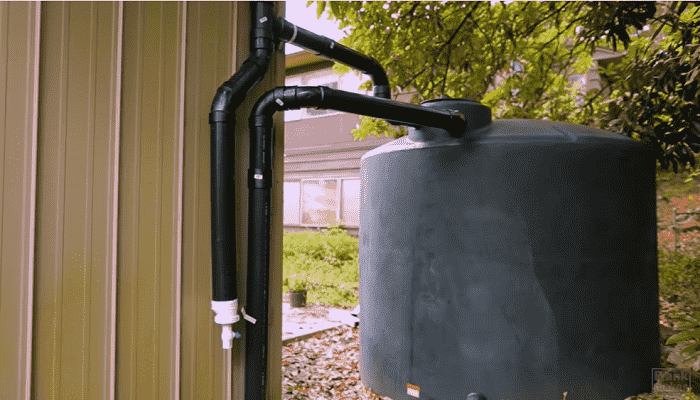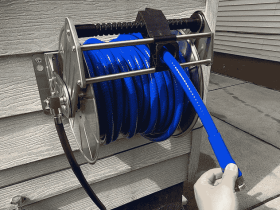Rainwater tanks have become increasingly popular as a sustainable water source for households. Not only do they help conserve water, but they also reduce reliance on mains water supply, ultimately benefiting both the environment and your wallet.
To ensure you maximize the benefits of your rainwater tank, it’s important to avoid common mistakes that can hinder its effectiveness. In this article, we’ll discuss 10 common mistakes and provide practical tips on how to optimize your rainwater harvesting system.
1. Choosing the Wrong Tank Size
One of the first mistakes people make is selecting the wrong tank size. It’s essential to choose a tank that suits your water needs and available space.
Too small, and you may run out of water during dry periods. Too large, and you’ll end up with an oversized tank that takes up unnecessary space. Consider factors like household water usage, roof catchment area, and average rainfall to determine the ideal tank size for your needs.
2. Poor Placement and Installation
The placement of your rainwater tank plays a crucial role in its efficiency. Avoid installing your tank in shaded areas where it won’t receive adequate rainfall.
Also, steer clear of spots near potential contaminants like trees or chemical storage areas. Instead, choose a location that allows for maximum rainwater collection. Proper installation, including a stable foundation and secure connections, ensures the longevity and effectiveness of your tank.
3. Neglecting Regular Maintenance
Just like any other equipment, rainwater tanks require regular maintenance to keep them in optimal condition. It’s easy to overlook this aspect, but trust me, a little bit of maintenance can go a long way!
Take the time to clean your gutters regularly, especially during the leafy seasons, to prevent blockages and ensure smooth water flow into the tank.
Inspect your filters periodically to make sure they are clean and functioning correctly, as clogged filters can compromise the quality of the collected water. Also, keep an eye out for any leaks or cracks and promptly address them to avoid water wastage.
Remember, maintenance isn’t a one-time task; it’s an ongoing commitment. Set reminders or create a schedule to help you stay on top of the maintenance routine. By dedicating a little time and effort, you’ll ensure your rainwater tank serves you well for years to come, providing a sustainable water source for your needs.
4. Lack of Filtration and Purification
Rainwater isn’t always safe to consume directly. To ensure its quality, proper filtration and purification are essential.
Many people make the mistake of not installing adequate filtration systems or neglecting water testing. Invest in a filtration system that suits your needs and regularly check the quality of your rainwater. This way, you can have peace of mind knowing the water you’re using is clean and safe.
5. Inadequate Overflow and Drainage Systems
An often overlooked aspect of rainwater tank setup is the overflow and drainage systems. Without proper planning, you may encounter problems like flooding or stagnant water.
Be sure to design and implement effective overflow and drainage systems to prevent such issues. This way, excess rainwater can be safely diverted, and your tank won’t become overloaded.
6. Failing to Educate on Water Usage
Using rainwater efficiently involves educating everyone in your household about responsible water usage. It’s common to overlook this aspect and not promote water conservation.
Take the time to discuss water-saving practices and set guidelines for usage. Simple steps like shorter showers, fixing leaky faucets, and watering plants wisely can make a significant difference in your water consumption.
7. Not Utilizing Additional Water-Saving Measures
Maximize your water savings by exploring additional measures that complement your rainwater tank system. Rain gardens, for example, allow rainwater to be absorbed by plants, reducing runoff and improving groundwater recharge.
Another option is capturing and utilizing greywater from sources like showers and laundry. These additional measures further enhance your overall water conservation efforts.
8. Overlooking Local Regulations and Permits
Before installing a rainwater tank, it’s crucial to research local regulations and obtain any necessary permits. Many people make the mistake of overlooking this step and face legal complications later.
Familiarize yourself with the rules and regulations in your area to ensure compliance. Obtaining the required permits will save you from unnecessary trouble and ensure that your rainwater harvesting system is legally sound.
9. Ignoring Safety Considerations
Safety should always be a top priority when it comes to any home improvement project, including rainwater tanks. Unfortunately, many people overlook safety considerations.
Ensure that your tank is securely installed, especially if it’s elevated or positioned in a potentially hazardous area. Implement safety measures like childproof locks and covers for open tanks to prevent accidents. Prioritizing safety allows you to enjoy the benefits of your rainwater tank without any worries.
10. Lack of Monitoring and Optimization
Once your rainwater tank is up and running, it’s essential to actively monitor and optimize its performance. Many people make the mistake of not tracking water levels or neglecting to optimize system components.
Keep an eye on your tank’s water levels to ensure you have a sufficient supply during dry periods. Additionally, optimize your collection efficiency by cleaning gutters regularly and maintaining roof catchment areas. If you notice any inefficiencies, consider making improvements or seeking professional advice to enhance your system’s performance.
Key Takeaways
Avoiding these ten common mistakes helps you to maximize the benefits of your rainwater tank and contribute to sustainable water usage.
- Remember to choose the right tank size, install it in an optimal location, and prioritize regular maintenance.
- Invest in proper filtration and purification systems, design effective overflow and drainage systems, and educate your household members on responsible water usage.
- Explore additional water-saving measures, adhere to local regulations and permits, and always prioritize safety.
- Finally, monitor your system and make necessary optimizations to ensure its efficiency.
With these tips in mind, you can make the most of your rainwater tank, conserve water, and play your part in creating a greener future. Happy harvesting!











Leave a Review